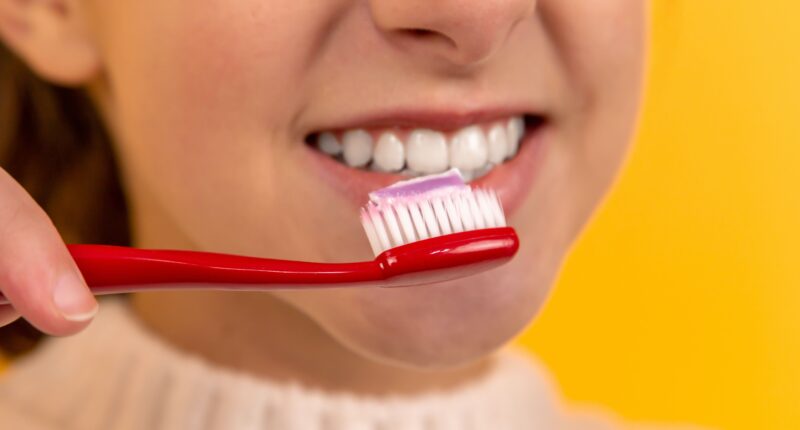12 Diseases You Can Catch Through Sharing Toothbrush – Sharing personal items, such as toothbrushes, is a common practice among family members or close friends. However, what many people don’t realize is that sharing a toothbrush can expose them to various diseases and infections. While it may seem harmless, the transfer of bacteria, viruses, and other pathogens can lead to serious health consequences.[1]
So maintaining good oral hygiene is essential for a healthy mouth and a healthy body. Brushing our teeth twice a day is a crucial step in this process. By sharing toothbrushes, we expose ourselves to a range of potential diseases that can jeopardize our oral health and compromise our immune system. Understanding the risks associated with sharing toothbrushes is vital to protect ourselves and our loved ones.
The Importance of Oral Hygiene
Before diving into the diseases transmitted through shared toothbrushes, it’s crucial to emphasize the significance of oral hygiene. Brushing our teeth helps remove plaque, bacteria, and food particles, reducing the risk of dental issues such as cavities, gum disease, and bad breath. Regular brushing, combined with flossing and routine dental check-ups, promotes optimal oral health and contributes to our overall well-being.
Diseases Transmitted through Shared Toothbrushes
1. Human Papillomavirus (HPV)
Human Papillomavirus (HPV) is a common sexually transmitted infection that can also be transmitted through shared toothbrushes. HPV can cause oral warts and increase the risk of oral cancer. Sharing toothbrushes can transfer infected cells from one person’s mouth to another, leading to HPV transmission.[2]
2. Strep Throat
Strep throat is a bacterial infection caused by group A Streptococcus bacteria. It is highly contagious and can easily be transmitted through shared toothbrushes. When an infected individual uses a toothbrush and another person uses it afterward, the bacteria can transfer, leading to the contraction of strep throat.
3. Herpes Simplex Virus (HSV)
Herpes simplex virus (HSV) is a common viral infection that causes cold sores or fever blisters. Sharing a toothbrush with an individual who has an active HSV outbreak increases the risk of transmission. The virus can be present on the bristles and handle of the toothbrush, making it easy to infect others.
4. Cold and Flu Viruses
Colds and flu are caused by different viruses, but they both spread easily through respiratory droplets. Sharing a toothbrush can introduce these viruses into your mouth, increasing the chances of getting infected. The viruses can survive on toothbrush bristles and handle, making it crucial to avoid sharing toothbrushes, especially during cold and flu seasons.
5. Gum Disease
Gum disease, also known as periodontal disease, is a bacterial infection that affects the gums and supporting structures of the teeth. Sharing a toothbrush can introduce harmful bacteria into your mouth, increasing the risk of developing gum disease. It’s important to maintain good oral hygiene practices and refrain from sharing toothbrushes to prevent this condition.
6. Hepatitis C
Hepatitis C is a viral infection that primarily affects the liver. While the virus is mainly transmitted through blood-to-blood contact, sharing a toothbrush with an infected individual can potentially lead to transmission. The virus can survive on toothbrush bristles and pose a risk if there are any open sores or bleeding gums.
7. Candidiasis (Yeast Infection/ Oral Thrush)
Candidiasis, commonly known as a yeast infection, is caused by an overgrowth of Candida fungus. Sharing a toothbrush can transfer the fungus from one person to another, leading to oral candidiasis. People with weakened immune systems or those who wear dentures are particularly susceptible to this infection.
8. Mononucleosis (Mono)
Mononucleosis, also known as “mono” or the “kissing disease,” is a viral infection commonly transmitted through saliva. Sharing a toothbrush can introduce the Epstein-Barr virus (EBV) into your mouth, increasing the risk of contracting mono. It is crucial to avoid sharing toothbrushes, especially during an active infection.
9. Norovirus
Norovirus is a highly contagious virus that causes gastroenteritis, leading to symptoms like vomiting, diarrhea, and stomach cramps. The virus can survive on toothbrushes and can be easily transmitted when shared. It is important to maintain good hygiene practices, including using separate toothbrushes, to prevent norovirus transmission.
10. Conjunctivitis (Pink Eye)
Conjunctivitis, commonly known as pink eye, is an inflammation of the conjunctiva, the thin tissue covering the white part of the eye. Sharing a toothbrush can transfer bacteria or viruses from the mouth to the eyes, leading to pink eye. It is essential to use separate toothbrushes to prevent the spread of this contagious condition.
11. Periodontitis
Periodontitis is an advanced stage of gum disease that affects the supporting structures of the teeth. Sharing a toothbrush can introduce bacteria into your mouth, leading to an increased risk of periodontitis. Practicing good oral hygiene, including using your own toothbrush, can help prevent this condition.
12 Streptococcus Mutans
Streptococcus mutans is a type of bacteria commonly found in the human mouth. It plays a significant role in tooth decay and cavity formation. Sharing a toothbrush can transfer these bacteria from one person to another, increasing the likelihood of dental issues such as cavities and tooth decay.[3]
Precautions to Avoid Sharing Toothbrushes
To protect yourself from the risks associated with sharing toothbrushes, it’s important to follow these precautions:
- Always use your own toothbrush: Each person should have their own toothbrush to maintain optimal oral hygiene.
- Store toothbrushes separately: Avoid storing toothbrushes in close proximity to prevent cross-contamination.
- Replace toothbrushes regularly: Replace your toothbrush every three to four months or sooner if the bristles become frayed.
- Avoid sharing oral hygiene items: This includes not only toothbrushes but also other items like floss, tongue scrapers, and mouthguards.
- Maintain proper oral hygiene: Brush your teeth twice a day, floss daily, and visit your dentist regularly for check-ups and cleanings.
Conclusion
Sharing a toothbrush may seem harmless, but it can have serious consequences for your oral health. The risk of contracting various diseases and infections is high when you share a toothbrush, as it can transfer bacteria, viruses, and fungi from one person to another. To protect yourself and maintain good oral hygiene, always use your own toothbrush and follow the recommended precautions.









